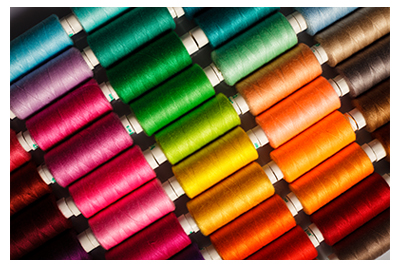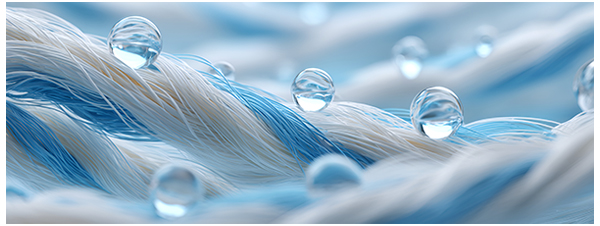The Use of Aluminum Sulfate in Textile Dyeing
In the global textile industry, the achievement of consistent color quality and wash fastness requires more than high-quality dyes alone; it depends on precise control of the chemical environment within the dye bath. Aluminum sulfate, with the chemical formula Al₂(SO₄)₃, serves as a fundamental auxiliary chemical in this process. Although it is often categorized as a commodity material, its function within a dye house is highly specific, acting as a chemical bridge between textile fibers and dyestuffs.
Historically, aluminum-based compounds were among the earliest mordants used in traditional dyeing practices. Their continued use in modern industrial dyeing reflects their effectiveness for particular fiber types and dye classes where synthetic alternatives may not provide the same fixation behavior, shade depth, or cost efficiency. In contemporary textile operations, aluminum sulfate remains an important process chemical rather than a simple additive, contributing to controlled dye fixation and color stability across a range of applications.
Role of Aluminum Sulfate in Textile Dyeing
 The primary role of aluminum sulfate in textile processing is its function as a mordant, a substance that fixes dyes onto fibers by forming coordination complexes. This interaction is especially significant for natural fibers such as wool and silk, as well as certain cellulosic fibers. Aluminum ions (Al³⁺) interact with functional groups on both the dye molecules and the textile substrate, forming an insoluble compound commonly referred to as a “lake.” Once formed, this complex becomes physically entrapped within the fiber structure, improving resistance to color loss during laundering and exposure to light.
The primary role of aluminum sulfate in textile processing is its function as a mordant, a substance that fixes dyes onto fibers by forming coordination complexes. This interaction is especially significant for natural fibers such as wool and silk, as well as certain cellulosic fibers. Aluminum ions (Al³⁺) interact with functional groups on both the dye molecules and the textile substrate, forming an insoluble compound commonly referred to as a “lake.” Once formed, this complex becomes physically entrapped within the fiber structure, improving resistance to color loss during laundering and exposure to light.
In industrial dyeing practice, the effectiveness of aluminum sulfate is closely linked to the fiber type. For protein fibers such as wool, the acidic nature of aluminum sulfate solutions can assist in opening fiber scales, facilitating deeper dye penetration and more uniform shade development. For cotton and selected synthetic blends, aluminum sulfate is often applied during pre-treatment or after-treatment stages to modify surface charge characteristics, improving dye exhaustion and fixation.
The decision to use aluminum sulfate is frequently driven by the need to achieve specific deep shades, stabilize natural pigments, or enhance fastness in dye systems that lack strong inherent affinity for the textile surface.
Industrial Selection Considerations
Selecting the appropriate grade of aluminum sulfate is a critical decision for textile process engineers. One of the most important distinctions is between ferric and non-ferric aluminum sulfate. In dyeing applications, the presence of iron impurities is generally undesirable, as iron can dull bright colors and cause unpredictable shade variation, particularly in light or color-sensitive fabrics.
Ferric aluminum sulfate for technical and dark textile applications may be considered only in cases where color precision is secondary to cost considerations, such as heavy industrial textiles, dark-colored geofabrics, or technical fabrics where aesthetic consistency is less critical. For most dyeing operations, high-purity, non-ferric aluminum sulfate is typically preferred to preserve brightness and shade consistency.
The physical form of aluminum sulfate also influences dye house operations. Dehydrated aluminum sulfate for space- and weight-efficient handling provides a higher concentration of active material per unit mass, reducing storage and transportation requirements. However, it dissolves more slowly than hydrated forms and requires controlled agitation to achieve a stable solution. Hydrated aluminum sulfate dissolves more readily and is often favored in facilities prioritizing ease of handling.
Many modern dye houses increasingly utilize liquid aluminum sulfate, supplied in intermediate bulk containers (IBCs) or bulk tankers, to support automated dosing systems. Liquid supply minimizes manual handling, improves dosing accuracy, and reduces operator variability. Final selection must align with existing dissolution infrastructure, dosing equipment, and the sensitivity of the dye classes in use.
Process and Operational Considerations
Successful application of aluminum sulfate in textile dyeing depends on careful pH control throughout the dyeing cycle. As an acidic salt, aluminum sulfate naturally lowers dye bath pH. Excessive acidification can lead to premature dye precipitation or fiber degradation, particularly in cellulose-based materials.
Aluminum sulfate also affects the physical characteristics of the finished textile. While it enhances color fixation, excessive residual aluminum on fibers can result in a harsh hand feel or interfere with subsequent finishing steps. Thorough rinsing and neutralization are therefore essential components of the dyeing process.
From an environmental perspective, aluminum sulfate contributes to the mineral load of dye house effluent. Similar pH adjustment and aluminum ion interaction principles are also referenced in agriculture and soil treatment applications , where controlled acidity and aluminum availability influence system performance.
Comparison with Alternative Textile Auxiliaries
Compared with traditional metallic mordants such as potassium dichromate or copper sulfate, aluminum sulfate offers a more favorable environmental and safety profile. While chromium-based mordants can deliver excellent fastness properties, their use is increasingly restricted due to regulatory and ecological concerns.
Relative to modern synthetic fixing agents, aluminum sulfate is often more cost-effective for large-scale dyeing of specific fibers and dye systems. Synthetic fixatives may offer easier handling and reduced pH sensitivity, but they do not always replicate the depth of shade or visual character produced by aluminum-based dye lakes.

Storage, Handling, and Safety in Dye Houses
Proper storage of aluminum sulfate is essential to maintain product quality and protect dye house infrastructure. Solid aluminum sulfate is hygroscopic and readily absorbs moisture from the air, which can lead to caking and handling difficulties in humid environments.
Aqueous aluminum sulfate solutions are acidic and corrosive to certain metals. Storage tanks, pipelines, and dosing equipment should be constructed from acid-resistant materials such as 316L stainless steel, fiberglass-reinforced plastic (FRP), or high-density polyethylene (HDPE).
Standard safety practices include the use of chemical-resistant gloves, eye protection, and appropriate ventilation when handling concentrated material or dust.
Procurement and Supply Perspective
From a procurement perspective, quality assurance relies heavily on technical specification sheets (TSS) and certificates of analysis (COA). For a broader understanding of aluminum sulfate grades and forms across industries, reference may be made to Aluminum Sulfate: Industrial Forms, Properties, and Applications .
Consistency between batches is particularly critical in textile dyeing. Minor variations in iron content or acidity can result in off-shade production, leading to costly reprocessing or fabric rejection.
Packaging must be robust enough to withstand the humid conditions common in textile manufacturing regions, ensuring that aluminum sulfate remains free-flowing and fit for use until it reaches the mixing stage.
Conclusion
Aluminum sulfate remains a cornerstone auxiliary in textile dyeing, offering a reliable and cost-effective means of dye fixation and color stabilization. Its effectiveness as a mordant is particularly valuable for traditional and industrial dyeing processes where precise chemical interactions are required.
Successful application depends on careful grade selection, rigorous control of dye bath chemistry, and appropriate handling practices.
Industry Note
This application overview is prepared with reference to industrial textile dyeing practices and typical aluminum sulfate specifications, and reviewed by the Aure Chemical technical team based on international supply experience.

